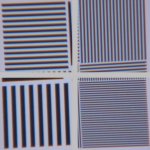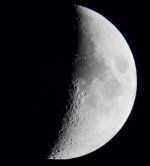Dynszis
Member

Hi,
some time ago, I tried a Kowa 883 with a TE-11WZ eyepiece, and a Sony Nex 7 attached via PA7 adapter.
The results did not impress me, reasoning that even an imperfect focus or camera shake could not have caused these chromatic aberrations.
Still I am not sure what one can reasonably expect, and what I may have been doing wrong.
What do you think, when looking at the 100% crop I attached: User error, wrong setup, or did I try out a lemon?
some time ago, I tried a Kowa 883 with a TE-11WZ eyepiece, and a Sony Nex 7 attached via PA7 adapter.
The results did not impress me, reasoning that even an imperfect focus or camera shake could not have caused these chromatic aberrations.
Still I am not sure what one can reasonably expect, and what I may have been doing wrong.
What do you think, when looking at the 100% crop I attached: User error, wrong setup, or did I try out a lemon?







